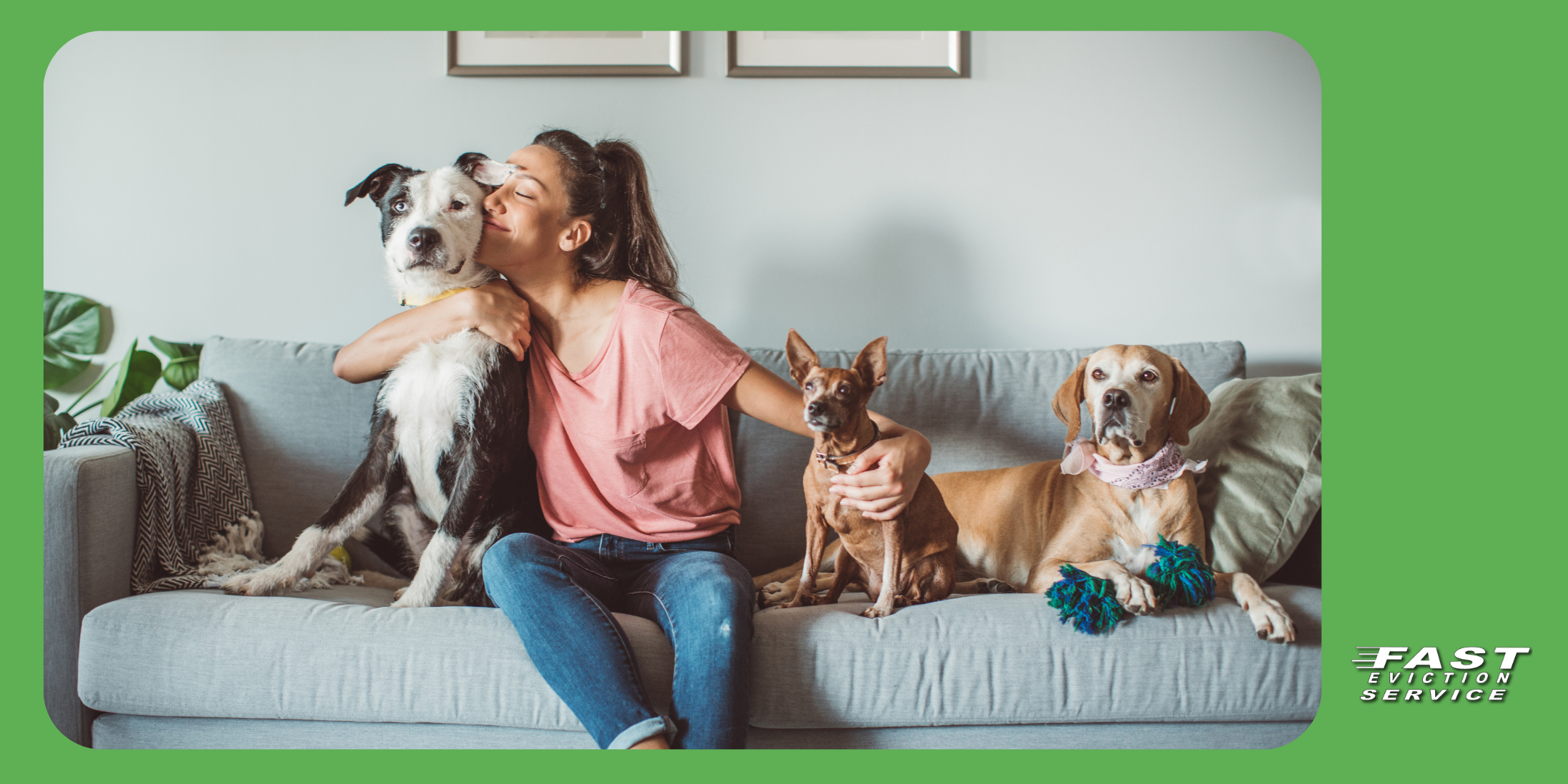Updated 6/14/24
Landlords are often hesitant to rent to people with dogs for fear that, besides the damage dogs can do to properties by accidents on carpets, chewing on things or scratching doors, that the landlords may be liable if the tenant’s dog bites someone.
While every state handles dog bite laws a little differently. In California for the most part with a few notable exceptions, the dog’s owner is solely responsible for injuries the dog may cause. It’s very rare that landlords can be sued for a tenant’s dog biting someone, but there are certain circumstances where the landlord may be liable.

Renters Insurance
First of all, it’s very important to require tenants who have dogs to have renters insurance to cover any potential injuries the dog may cause. The overwhelming majority of dog bites occur with what are listed as dangerous dog breeds, that include Pit Bulls, Rottweilers and German Shephards.
Many insurance companies will not underwrite policies involving dangerous dog breeds. If a landlord rents to a tenant with one of these breeds that are excluded, the landlord may be liable for damages if injuries are severe and exceed the amount the tenant had coverage for.
Sometimes guests overstay the specified length of time guests may be on the property, begin acting like tenants, including bringing pets onto the property. It is very important to make sure anyone residing on the property be listed and signed onto the rental or lease agreement and know when guests become tenants in California to make them legally accountable for their actions.
People sue for all sorts of reasons and don’t always prevail, but whether or not a lawsuit against a landlord for a tenant’s dogs biting someone in a California Court of Law depends upon a few scenarios.
There are basically three ways a California landlord can be held liable for a tenant’s dog biting someone.
Landlord Has Actual Knowledge it is a Dangerous Dog
The first scenario is if the landlord had actual knowledge the dog is dangerous. For example if it has bitten someone before. When a dog has a history of aggression, it often means it will bite again.
If the landlord had knowledge the dog had previously bitten someone and had not removed the dog from the property, this has been proven to be negligence on the part of the landlords who have been found liable in California. A dog can also be found to be aggressive and dangerous even if it hasn’t bitten anyone . For example, aggression against other dogs or cats.
A landlord can get into trouble this way if they do not enforce their own rental or lease agreement. If the tenant signed an agreement that stated that if the dog exhibits any vicious behavior that the tenant must get rid of the animal or leave the property – and the dog bites someone and he didn’t enforce the agreement the landlord can be held liable because the landlord now knew the dog was a threat to others and allowed it to continue to be on the property.
These scenarios are dependent upon the landlord being able to remove the dog. There are circumstances where a landlord purchases a property with renters who have a lease that permits them to have their dog. The landlord needs to honor the existing lease and may not be liable if the dog attacks someone even if he knew it was dangerous because he did not have the power to remove it. The landlord is still required to post beware of dog signs if he knows it has a history of aggression – even if he can’t remove it.
Harboring a Tenant’s Dog
The second way a landlord can be liable for a tenant’s dog bite if they are taking care of the dog for the tenant or harboring it. If a landlord does more than simply rent to the tenant with the dog – if he cares for it, feeds it or exercises some control over it – the landlord is usually treated like the dog’s legal owner when it comes to liability for a dog bite.
Allowing the Dog to Escape Confinement
The third way a landlord can be liable for a tenant’s dog bite is if their actions or lack of actions allows a dog to escape confinement. This often involves a latch on a gate that is broken and wasn’t fixed or a rotted board on a fence that allowed a dog to get out of its normal enclosed area and bite someone. The landlord may be liable in California even if the dog bite didn’t occur on the property if it can be proven the defect was known by the landlord but not fixed.
Take Precautions
While in most instances a dog’s owner is liable for any injuries the dog causes, if you allow dogs on your property its essential to take the necessary steps to make sure the dog is safe. That includes screening the tenant and the dog at the time of the tenant interview and ask for proof of vaccinations.
Make clear in your rental or lease agreement that if the dog shows any vicious behavior, that either the dog needs to leave the property or the tenant has to leave. Enforce this requirement religiously!
Be certain your tenant carries renter’s insurance and their policy has adequate coverage for any injuries that could occur. Be certain your own insurance covers damages from dogs and that the dog is not a dangerous breed excluded from coverage. Above all else know and follow the law to protect yourself and all of your tenant’s safety.




